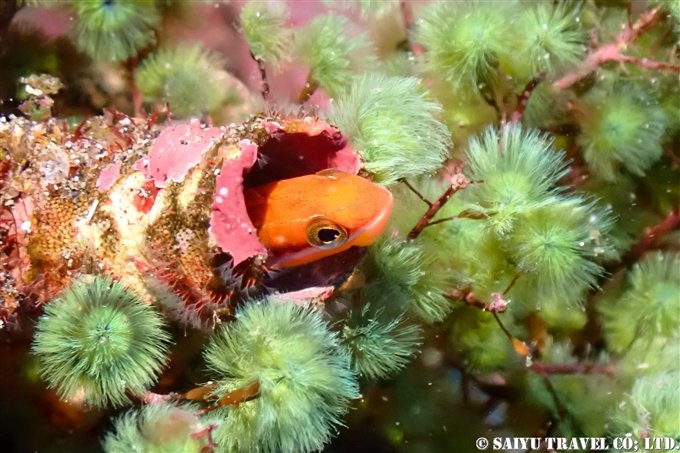
This is my report of diving in Izu Oshima. You can get there by jet foil boat in only 2 hours and is so surprising that it is this close to Metropolitan Tokyo.
It is a paradise for various sea creatures, which is great for photographers. The first thing we wanted to see was the Hammerhead Shark in the early morning hours, but I could also observe other things at the diving spots “Ou no hama 王の浜 (Kings Beach)” and “Aki no hama 秋の浜(Autumn Beach)”.
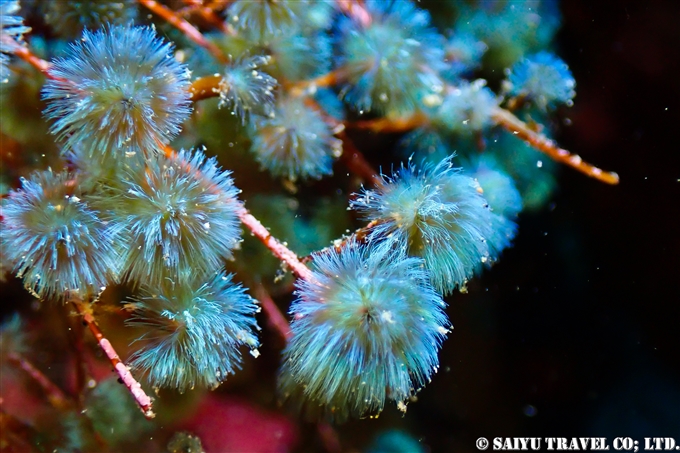
This is a type of seaweed called ”KEYARI” in local language, Sporochnus radiciformis that we saw from “King’s Beach 王の浜”. It is a popular subject for photo enthusiasts because of its beautiful peacock-like feathers, if you can manage to creatively get the right angle with some technique. It is widely distributed in the Japan sea, but it is said that the areas where the Kuroshio current passes through are more colorful.
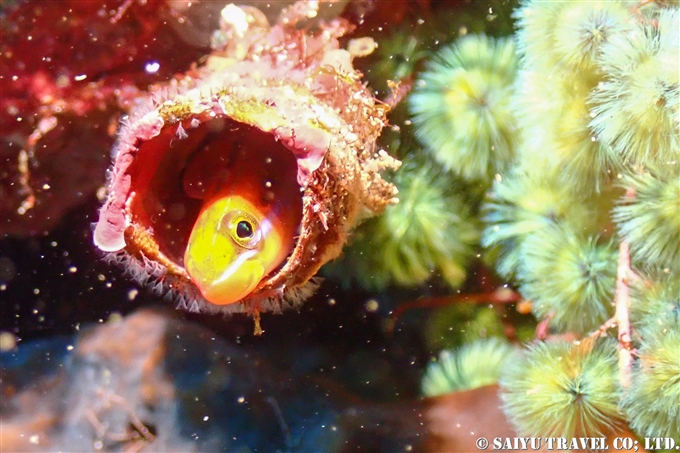
Then this Piano Fangblenny who shares the area with the S. radiciformis. These little fish are found on the Pacific side of Japan and are only about 10 cm (4 inches) long. I saw in the same place, two times, but it never showed its entire body. This pose, poking it’s face out and with the S. radiciformis in the background was irresistibly cute.
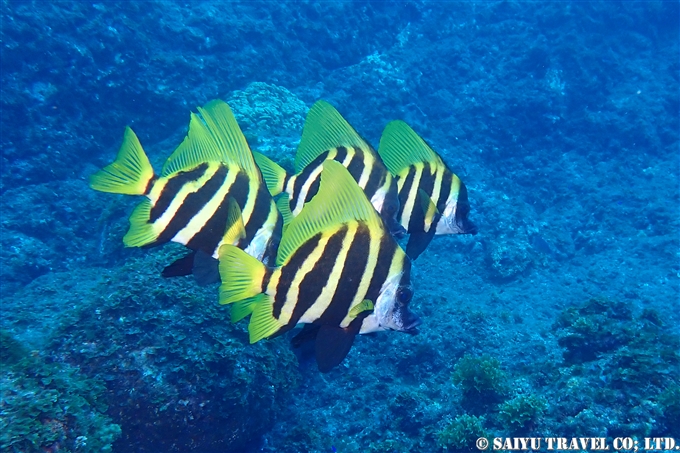
At “Ou no hama 王の浜” (King’s Beach), we also saw the Banded Boar head, a fish that stands out and grows to about 50 cm (20 inches). These were quite accustomed to divers.
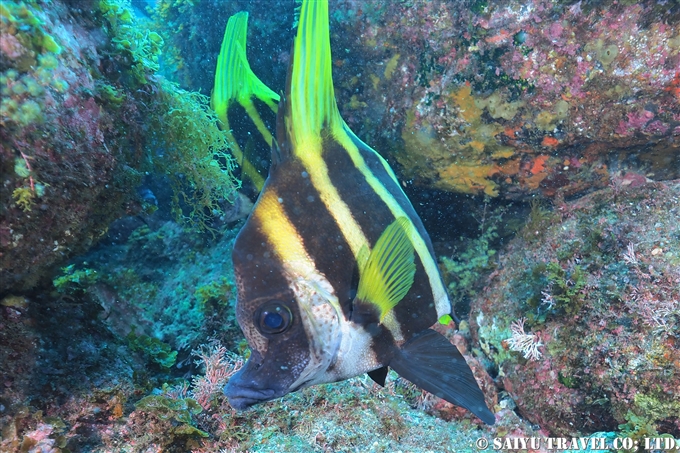
Like Long barbeled grunter, it has fine whiskers on its lower jaw, which are said to be skin protrusions.
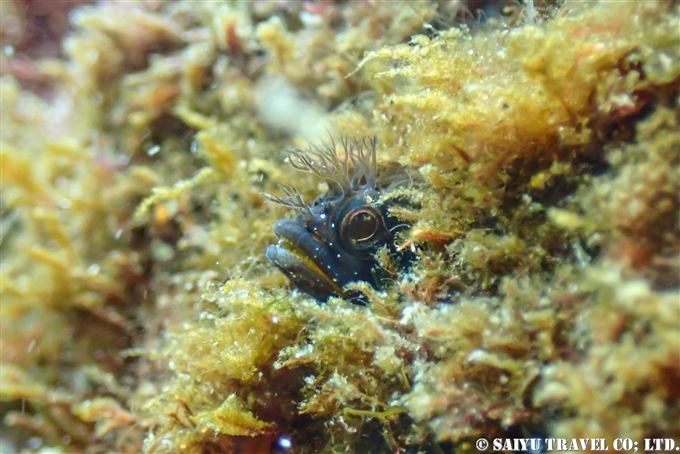
Just as I was leaving the King’s Beach 王の浜, I stopped at this structure “Rock of Moss Fringehead.” This super cute and tiny collection of Moss Fringehead captured many divers attention and we were all trying to get a good photo while being swayed by the waves and current.
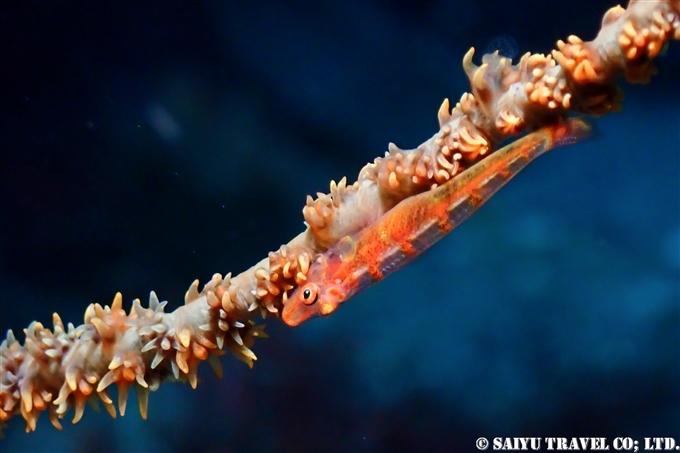
It was “Aki no hama 秋の浜 (Autumn Beach)” where I could observe the most variety creatures (it is also popular with other divers because of the easy access point).
This is a Whip coral goby attached to the whip coral.
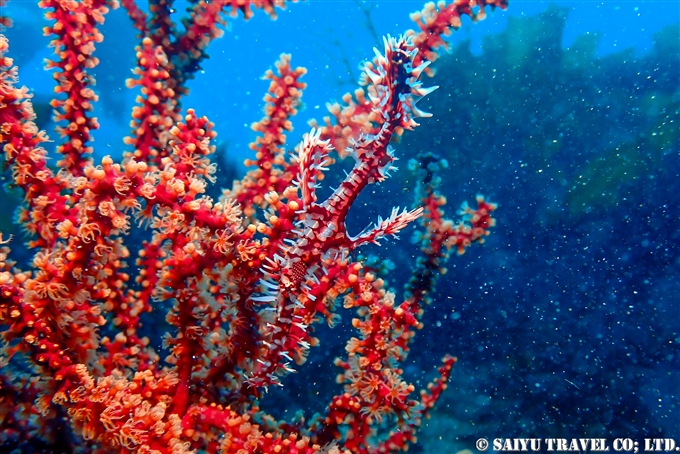
And diving to a deeper level, this Harlequin ghost pipefish could be seen. It’s hard to see because it’s camouflaged to look like the coral!
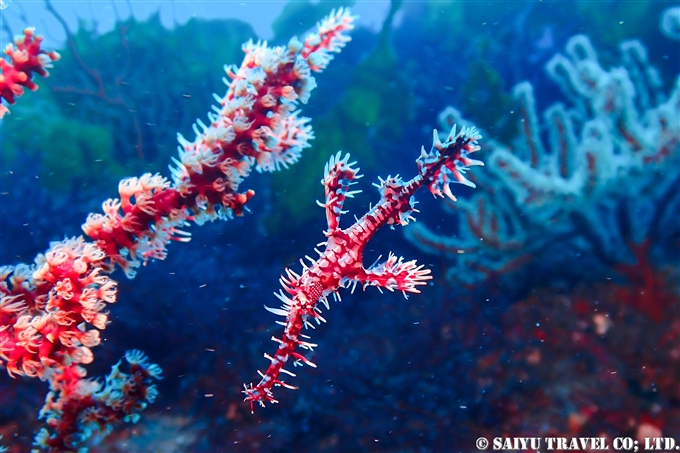
The male Harlequin ghost pipefish mimics the coral almost exactly. They are a member of the Solenostomidae family, and was previously thought to be an intraspecific mutation, but in 1994, they were named as a separate species.
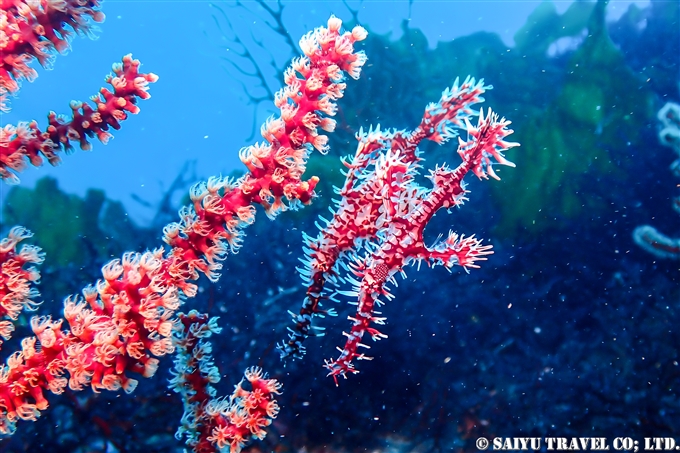
This is a pair of Harlequin ghost pipefish. The female is pregnant, carrying the eggs in her belly.
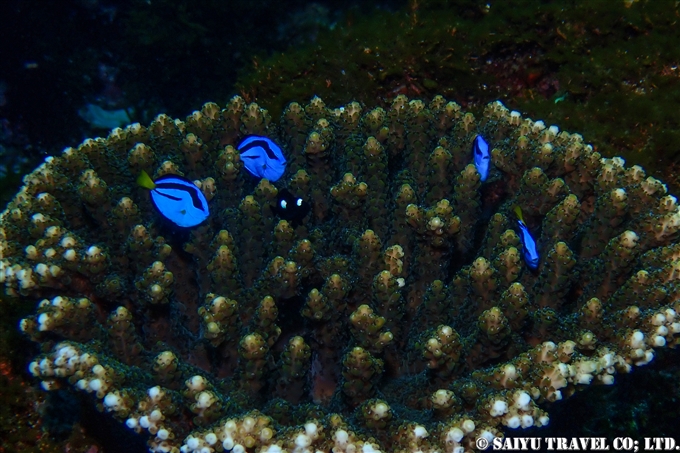
The babies of the Palette surgeonfish.
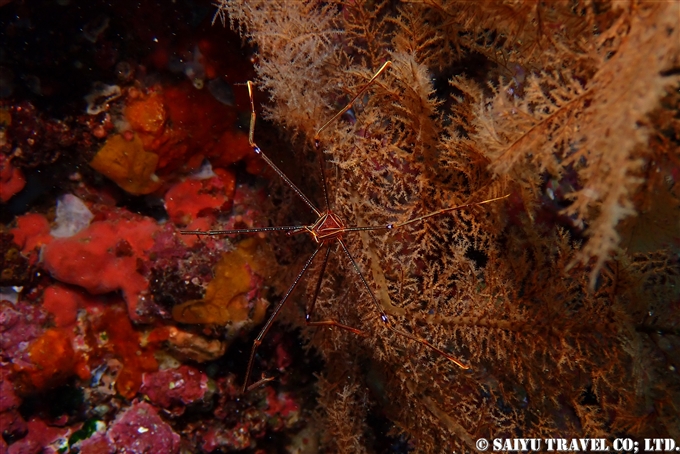
Ortmann’s spider-crab.
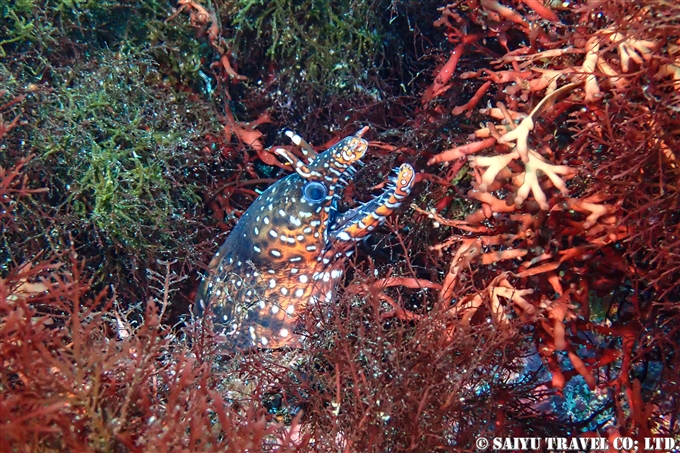
Then, according to our guide Mr. Furuyama, the first thing that foreign divers request to see is this Dragon Moray Eel.
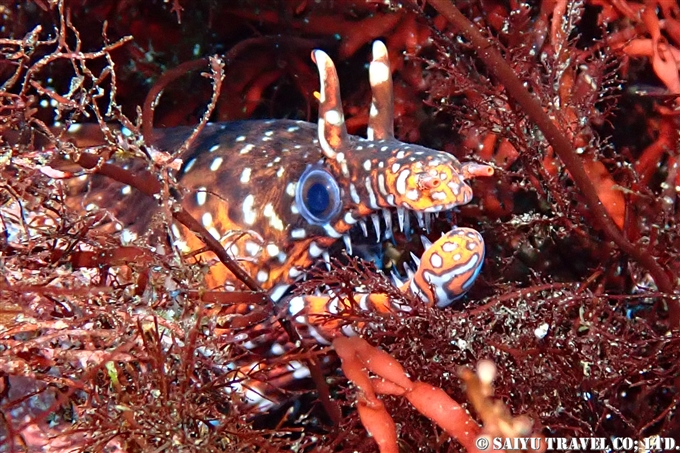
The Japanese name of this fish is “TORA-UTSUBO”, translated as Tiger moray eel. To me, it doesn’t look like a “tiger”, (the pattern seems more like a leopard), and the name “Dragon” seems accurate. But perhaps the most accurate description could be the “Qilin” which appears in Chinese mythology?
Photo & text: Mariko SAWADA
Observation: Sep 2021, Izu-oshima, Tokyo, JAPAN
Tags: Dive in Izu Oshima, Palette surgeonfish, Diving Izu Oshima, Dragon Moray Eel, Wildlife of Japan, Ounohama, 伊豆大島, Dive in Japan, Akinohama, 伊豆大島ダイビング, Wildlife tour of Japan, 王の浜, Scuba diving in japan, Diving tour of Japan, 秋の浜, Scuba diving tour in Japan, Hammerhead shark, keyari, Scuba diving in Izu Oshima, Piano Fangblenny, Harlequin ghost pipefish, Banded Boar head, Wildlife in Japan, Moss Fringehead, Whip coral goby



